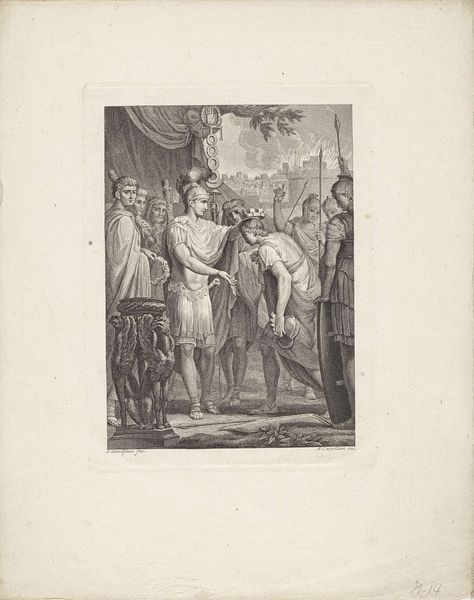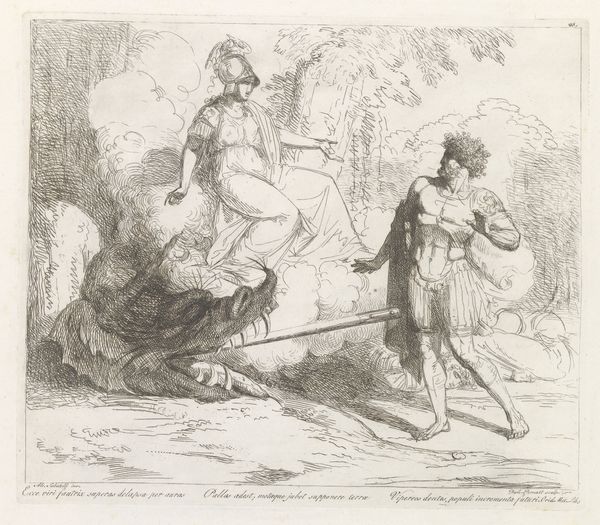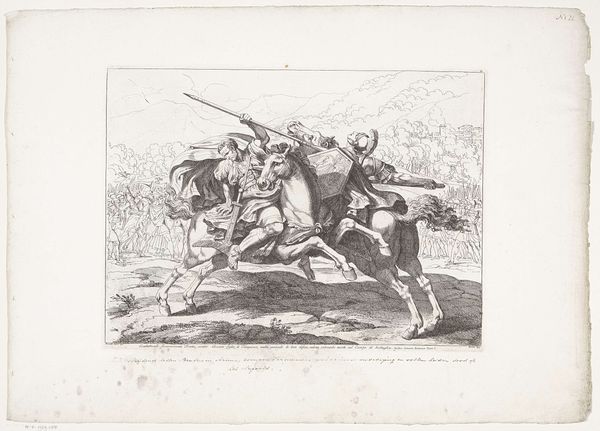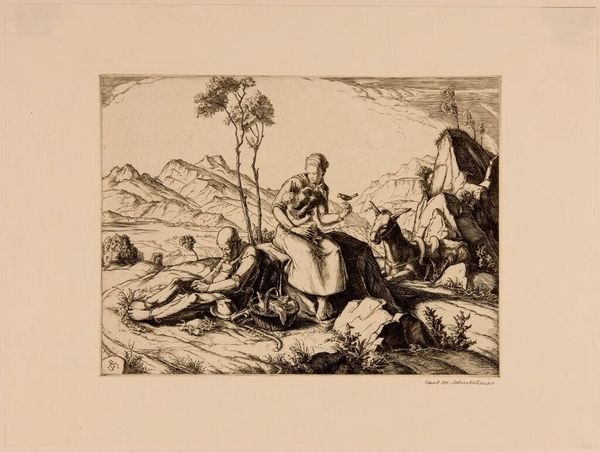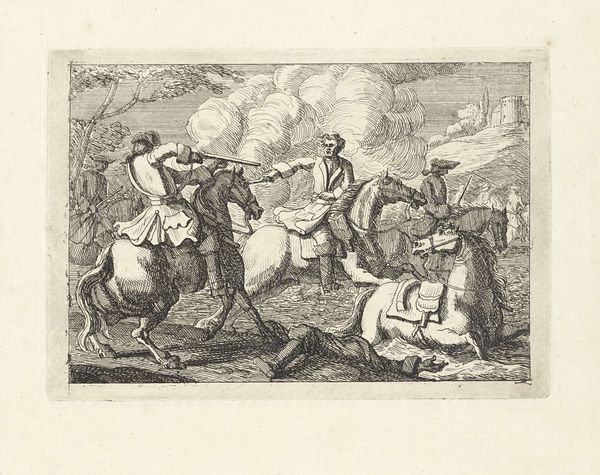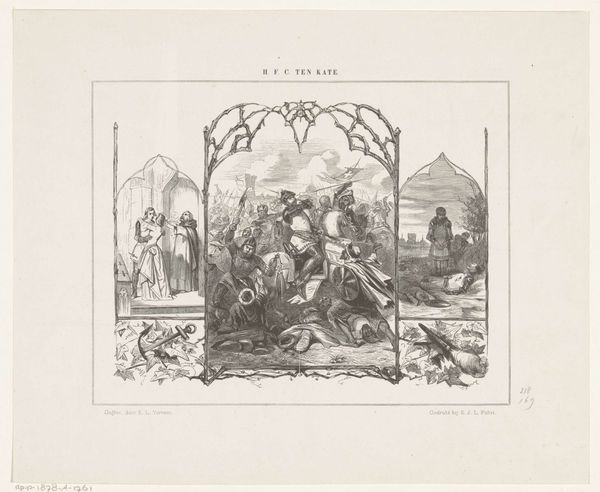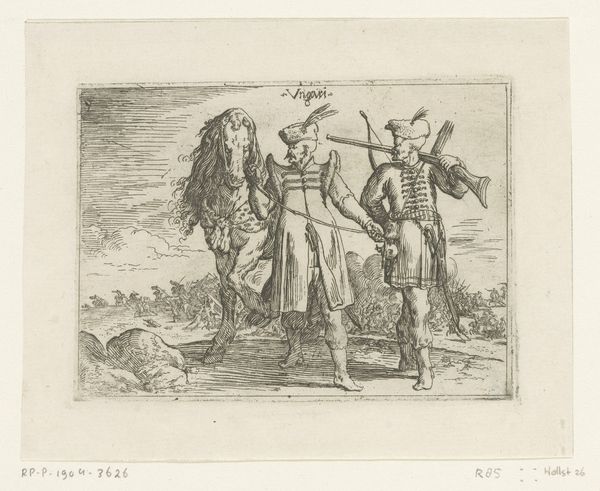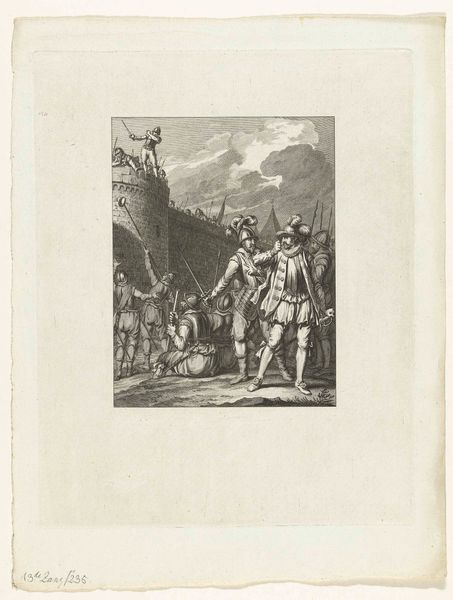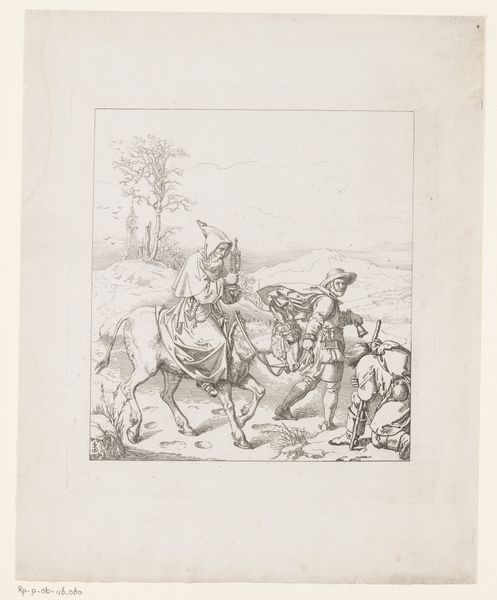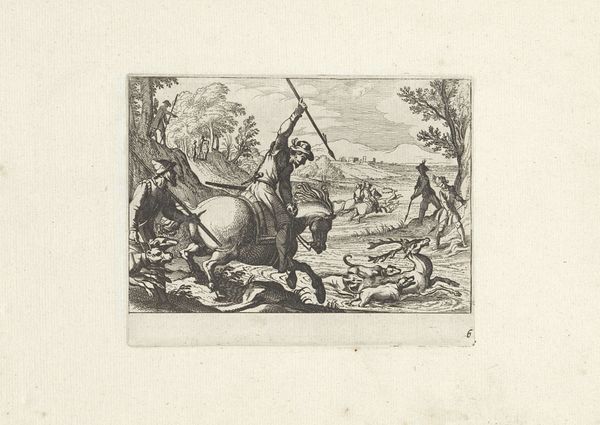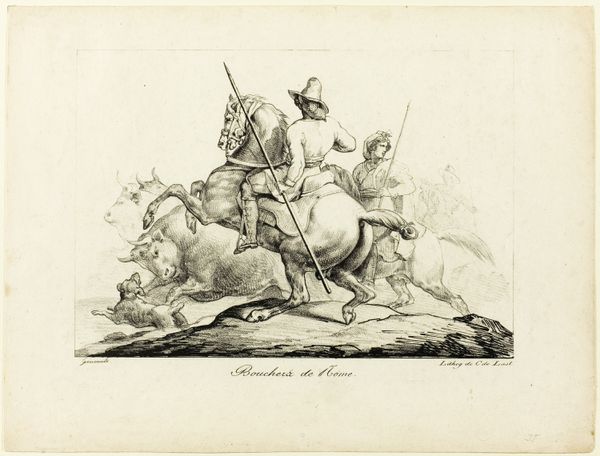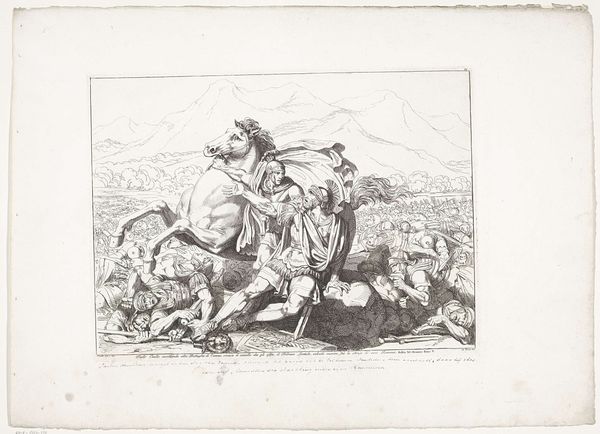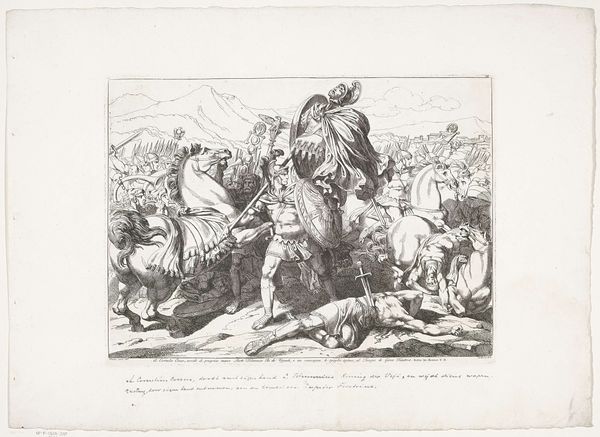
drawing, ink, engraving
#
drawing
#
neoclacissism
#
landscape
#
figuration
#
ink
#
cityscape
#
history-painting
#
engraving
Dimensions: height 317 mm, width 425 mm
Copyright: Rijks Museum: Open Domain
Bartolomeo Pinelli created this print of Romulus using a plough to mark the boundary of the Palatine Hill. This image, made by an Italian artist in the late 18th or early 19th century, speaks to the enduring cultural fascination with the founding myths of ancient Rome. The print visualizes a key moment in the story of Rome’s origins. Romulus is shown ritually marking the city’s boundary, a sacred act with political implications. The image is full of classical references, from the architecture in the background to the figures’ idealized forms and drapery. These visual codes, combined with the subject matter, link Rome with its ancient past. Pinelli was working at a time when Rome’s artistic institutions, like the Academy of St Luke, were seeking to promote classical artistic values. To understand this print better, it would be helpful to investigate the rediscovery of ancient Roman sites, the revival of classicism in European art, and the cultural function of such images in shaping national identity. By understanding its historical context, we can better appreciate how it conveys meaning.
Comments
No comments
Be the first to comment and join the conversation on the ultimate creative platform.
